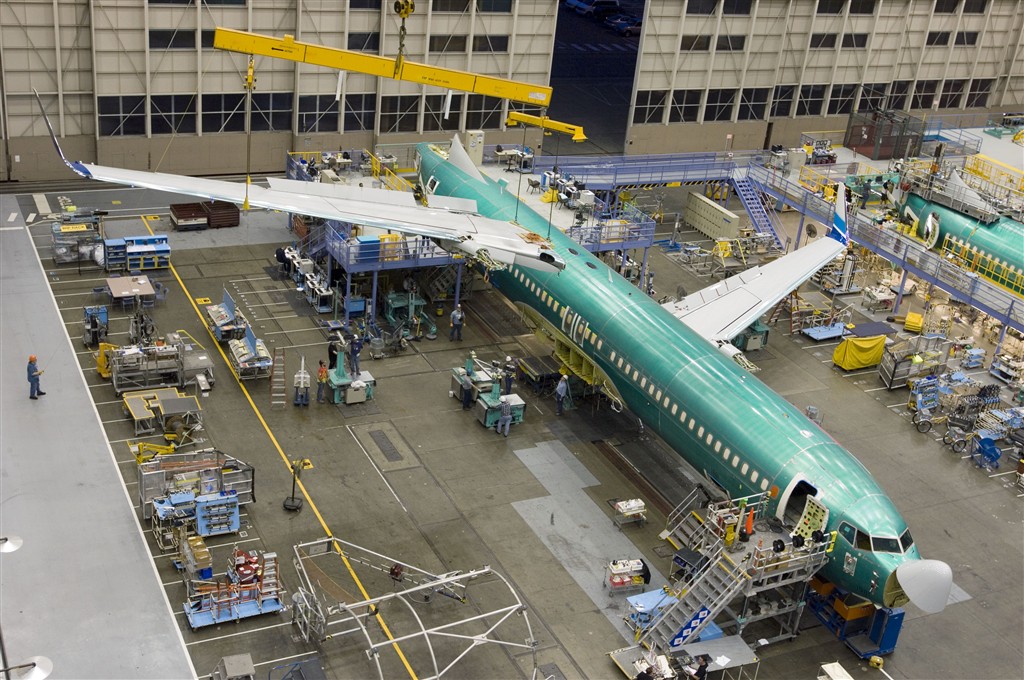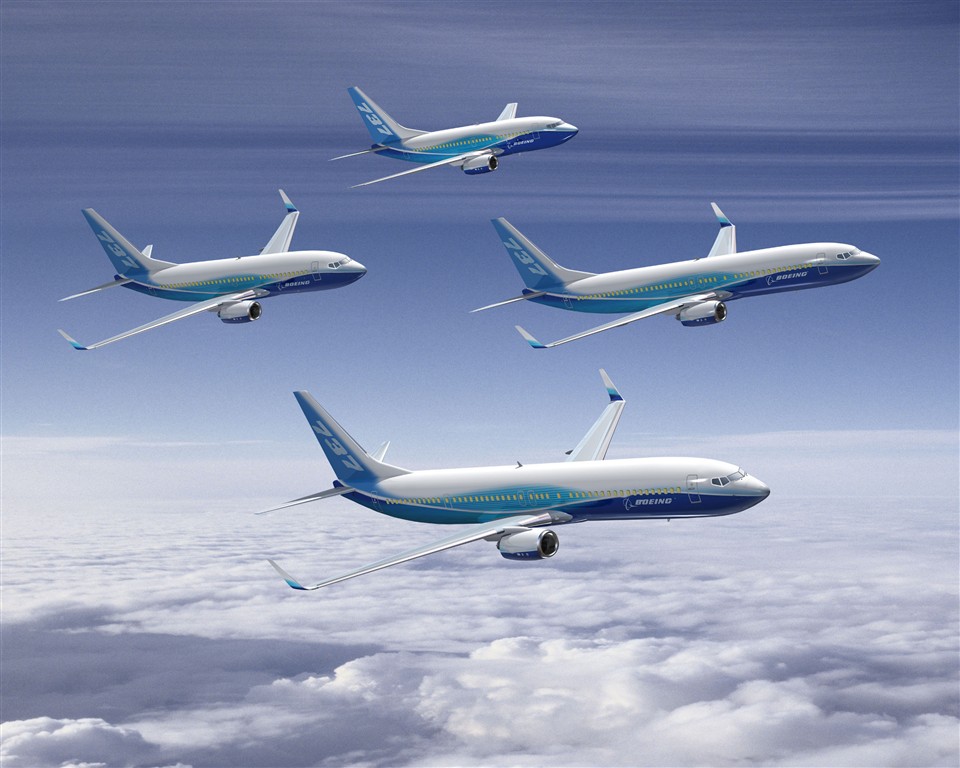You are using an out of date browser. It may not display this or other websites correctly.
You should upgrade or use an alternative browser.
You should upgrade or use an alternative browser.
New Airplane
- Thread starter ChrisReid
- Start date
Bandit LOAF
Long Live the Confederation!
I think the other three are a -600, a -700 and a -800.
Bandit LOAF
Long Live the Confederation!
Chris says: "At cruise altitude, winglets let you back off throttle. Save fuel and less noise."
Maj.Striker
Swabbie
Banned
What is the advantage this plane has over current models? Better fuel consumption rate? Faster? Greater passenger capacity?
Bandit LOAF
Long Live the Confederation!
Hopefully Chris will be able to have answered that question in the second sentence of his first post.
Death
gh0d (Administrator)
Cpl Hades said:Wow, it has weirdo upturned wing tips. I wonder how they help.
Normal wingtips leave vortexes of disturbed air that cause drag. The winglets are to help smooth out that air to increase fuel efficiency.
The fine details I'm rusty on, but that's the basic theory.
Death said:Normal wingtips leave vortexes of disturbed air that cause drag. The winglets are to help smooth out that air to increase fuel efficiency.
The fine details I'm rusty on, but that's the basic theory.
Yep, that's it. The phenomenon is called induced drag. The winglets act as kind of a barrier, that prevents the vortices that cause it from being created at the end of the wings. I knew that aerodynamics book would come in handy someday.
Maj.Striker
Swabbie
Banned
Bandit LOAF said:Hopefully Chris will be able to have answered that question in the second sentence of his first post.
Hmm, I apologize. I missed that second sentence. My mistake. Thank you for pointing me to it.

Delance
Victory, you say?
Bandit LOAF said:Chris says: "At cruise altitude, winglets let you back off throttle. Save fuel and less noise."
I wonder why the plane on the top doesn't have them. Does the size of the plane or lenght of the travel matter?
The winglets are also useful for action movies, because the hero or the bad guys won't fall from the tip of the wings while they are fighting.
Winglets are wing extensions that improve the efficiency of a wing. A plane generates lift because the wing's shape generates a pressure differential - the pressure is higher on the bottom of the wing than the top.
Now, as you all know, when you have higher pressure air and lower pressure air, the high pressure region wants to "leak" into the low pressure region. At the wingtip, this causes the high pressure air to go around to the other side, which spoils efficiency (and generates wingtip vortices). The winglet acts like a small barrier that keeps the high pressure air a bit more separate from the low pressure air.
Earlier plane designs don't have winglets because aircraft manufacturing technology wasn't as advanced. Remember, the winglet is a member that's producing no lift, and is effectively a weight at the end of the wing. That weight leads to requiring stronger wing root fasteners (you've got a fair bit of weight at the end of a long lever arm), wing spars, etc. This leads to a heavier aircraft, which needs more fuel, and the end result is well, the efficiency gained by the winglet was eaten up by the extra weight for having one installed.
With today's advanced materials (composites), the winglet can be made much lighter, and the spars and other pieces can be much stronger than in the past. This results in a net gain in efficiency all said and done.
And no, there's no reason why any plane can't have winglets, other than the weight limitations. (In fact, most planes do have small wingtip modifications that while not a winglet, do provide some efficiency gains). It's mostly a weight vs. cost vs. benefit equation.
Now, as you all know, when you have higher pressure air and lower pressure air, the high pressure region wants to "leak" into the low pressure region. At the wingtip, this causes the high pressure air to go around to the other side, which spoils efficiency (and generates wingtip vortices). The winglet acts like a small barrier that keeps the high pressure air a bit more separate from the low pressure air.
Earlier plane designs don't have winglets because aircraft manufacturing technology wasn't as advanced. Remember, the winglet is a member that's producing no lift, and is effectively a weight at the end of the wing. That weight leads to requiring stronger wing root fasteners (you've got a fair bit of weight at the end of a long lever arm), wing spars, etc. This leads to a heavier aircraft, which needs more fuel, and the end result is well, the efficiency gained by the winglet was eaten up by the extra weight for having one installed.
With today's advanced materials (composites), the winglet can be made much lighter, and the spars and other pieces can be much stronger than in the past. This results in a net gain in efficiency all said and done.
And no, there's no reason why any plane can't have winglets, other than the weight limitations. (In fact, most planes do have small wingtip modifications that while not a winglet, do provide some efficiency gains). It's mostly a weight vs. cost vs. benefit equation.
ChrisReid
Super Soaker Collector / Administrator
Delance said:I wonder why the plane on the top doesn't have them. Does the size of the plane or lenght of the travel matter?
Worf said:Earlier plane designs don't have winglets because aircraft manufacturing technology wasn't as advanced. Remember, the winglet is a member that's producing no lift, and is effectively a weight at the end of the wing. That weight leads to requiring stronger wing root fasteners (you've got a fair bit of weight at the end of a long lever arm), wing spars, etc. This leads to a heavier aircraft, which needs more fuel, and the end result is well, the efficiency gained by the winglet was eaten up by the extra weight for having one installed.
The 737-600 on top is actually younger than the -700 and -800 in the middle. All four main models come from a major redesign in the late 90s. The blended winglet is an option on the 737, and it's not offered on the -600. Because it does add weight and it's optimized for longer ranges, a certain number of orders don't get them. Not a whole lot of -600s get made to begin with, so the numbers just didn't play out for them there. And when you are showing the current lineup like that, it's nice to have one without the winglets to represent all the planes that opted not to include them.
They look really neat though. You don't see the fuselage when you're sitting in the plane looking out, but you can see the colorful winglets from your seat. Customers have a ton of different paint schemes and designs they put on them. A lot of local regional carriers fly 737s, so whenever you travel to different places, you'll find new ones.
criticalmass
Vice Admiral
Lt.Death100
Spaceman
That's pretty funny.Frosty said:
Actually, the 737-600 may be "younger", but if it's based on an older airframe design, then it's quite likely that winglets aren't an option since the aircraft would've been certified without it when it was designed and tested.
Of course, the last image gives new meaning to "Scarebus" and "If it's not Boeing, I'm not going".
Of course, the last image gives new meaning to "Scarebus" and "If it's not Boeing, I'm not going".
ChrisReid
Super Soaker Collector / Administrator
Frosty said:Picture
That's great!
Worf said:Actually, the 737-600 may be "younger", but if it's based on an older airframe design, then it's quite likely that winglets aren't an option since the aircraft would've been certified without it when it was designed and tested.
The -600 fuselage and wings were redesigned off the same new template as the -700 and -800 in the late 90s. The wings are the same size and almost interchangeable (and substantially different than all prior 737 wing designs). The fuselages are mainly stretch versions of eachother, with additional exits. All three were originally designed and built prior to the introduction of winglets as an option for the 737.





